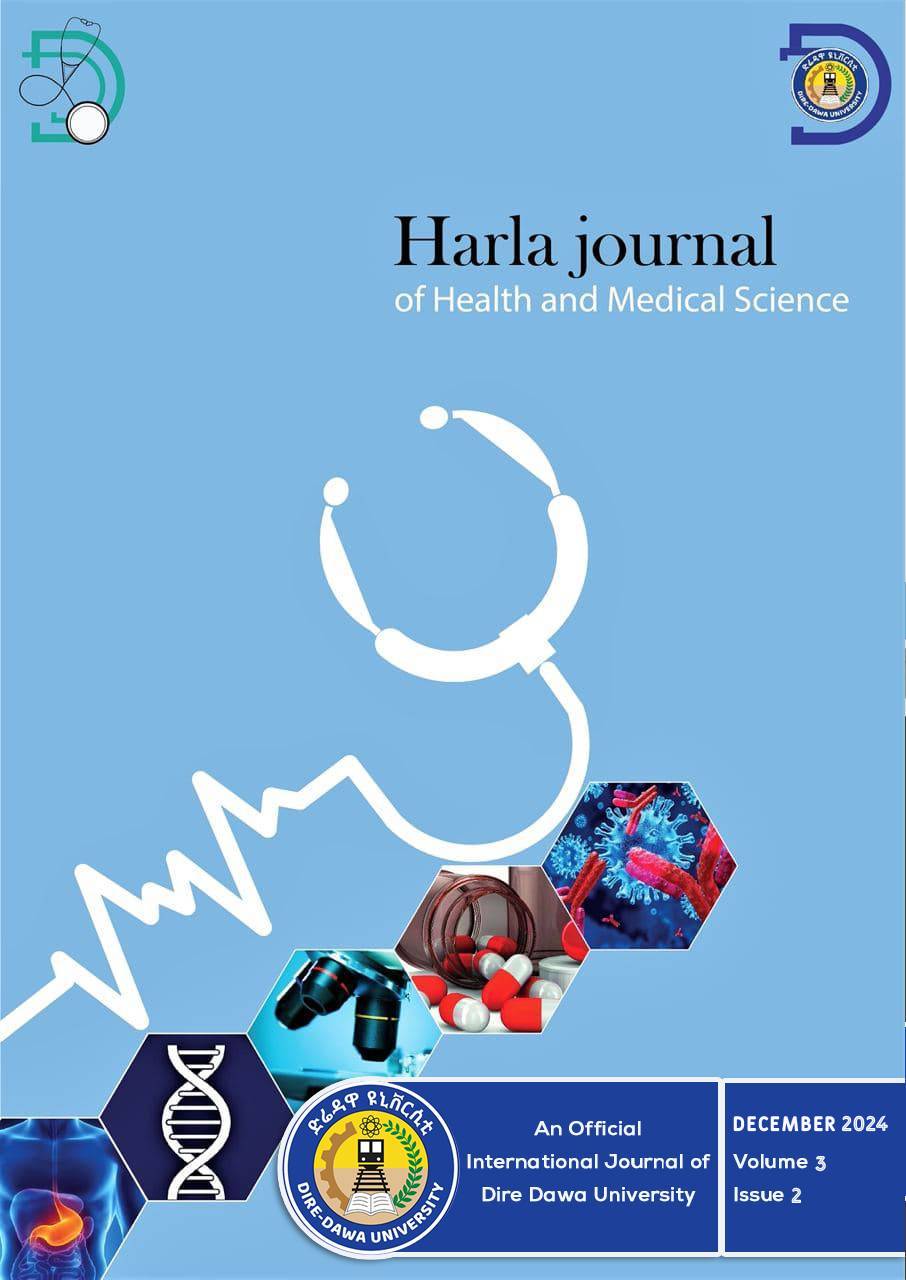Predictors of Survival Status Among Children on Antiretroviral Treatment at Dilchora Referral Hospital, Eastern Ethiopia:
Cox Regression Model
DOI:
https://doi.org/10.20372/hjhms.v3i2.185Keywords:
Antiretroviral Treatment, Child Survival, Ethiopia, Predictors, Survival AnalysisAbstract
Background: Despite expanded HIV care saving millions of children, over 1.6 million new infections occur annually, and child mortality remains high. Evidence on context-specific risk factors for mortality among children with HIV is limited. This study aimed to identify predictors of mortality among children on ART in Eastern Ethiopia.
Methods: A retrospective cohort study was conducted on 362 randomly selected pediatric ART records at Dilchora Referral Hospital (2017–2021). Data were collected from ART registers, intake forms, and follow-up charts. Descriptive statistics, life tables, Kaplan-Meier survival curves with log-rank tests, and Cox proportional hazards regression were used. Variables with p < 0.25 in bivariate analysis and clinically relevant factors were included in multivariable Cox regression. Crude and adjusted hazard ratios (AHR) with 95% CIs were reported; p < 0.05 indicated statistical significance.
Results: A total of 343 children were followed retrospectively for a median survival time of 80 months. During treatment, 57 (16.6%) (95% CI: 12.2, 20.8) of the children died. The hazard of death was highest during the first three years after ART initiation and declined thereafter, with nearly half of the deaths (28) occurring in the first year. The key predictors of mortality obtained from the study were wasting (AHR = 1.67, 95% CI: 0.90, 3.09), anemia (AHR = 1.72, 95% CI: 0.93, 3.17), advanced WHO clinical stage (AHR = 2.84, 95% CI: 1.08, 7.47), immunologic failure (AHR = 3.49, 95% CI: 1.79, 6.82), poor ART adherence (AHR = 2.36, 95% CI: 1.01, 5.50), and delayed or poor developmental milestones (AHR = 2.22, 95% CI: 1.15, 4.28). The adherence is influenced by multiple factors, including caregiver support, child behavior, and healthcare system engagement.
Conclusion: Mortality among children living with HIV remains a significant public health concern and is strongly associated with wasting, advanced disease stage, immunologic decline, poor adherence to ART, and delayed developmental milestones. Targeted interventions addressing these factors are critical to improving child survival.
Downloads
Published
How to Cite
Issue
Section
License
Copyright (c) 2024 Harla Journals and Author(s)

This work is licensed under a Creative Commons Attribution-NonCommercial 4.0 International License.






